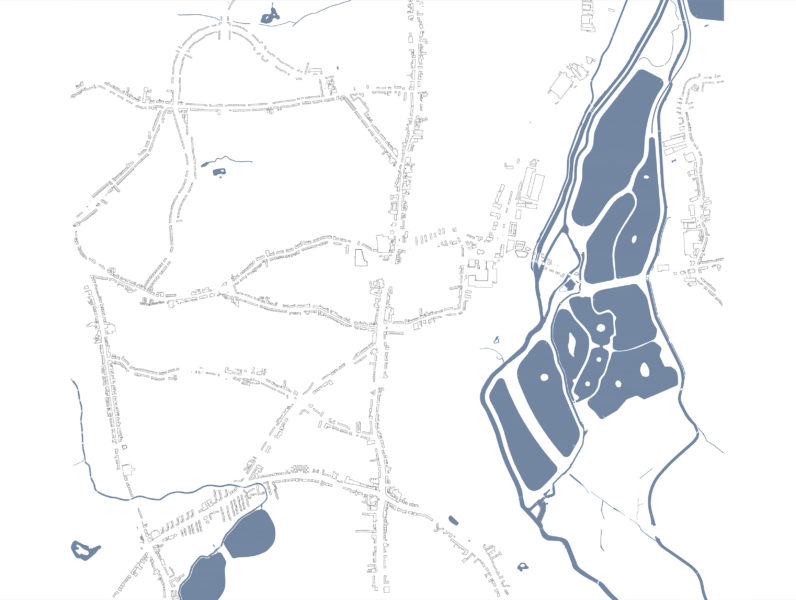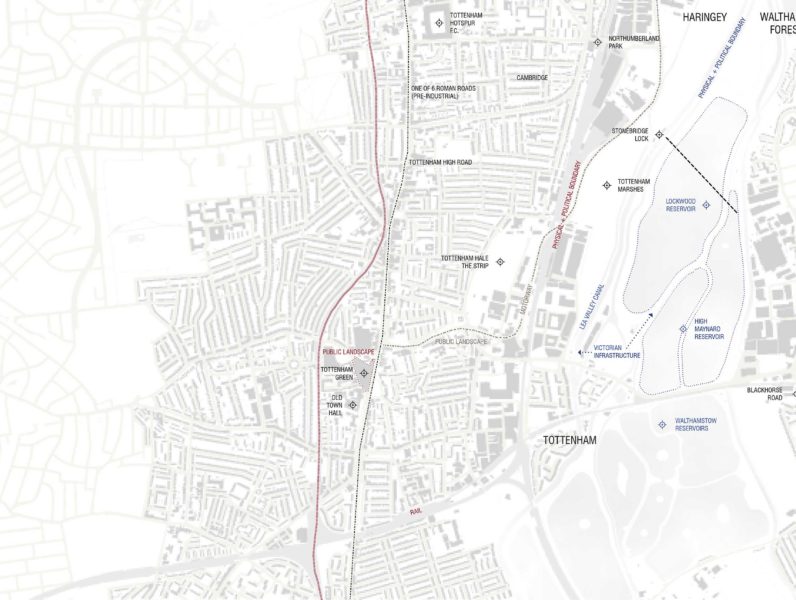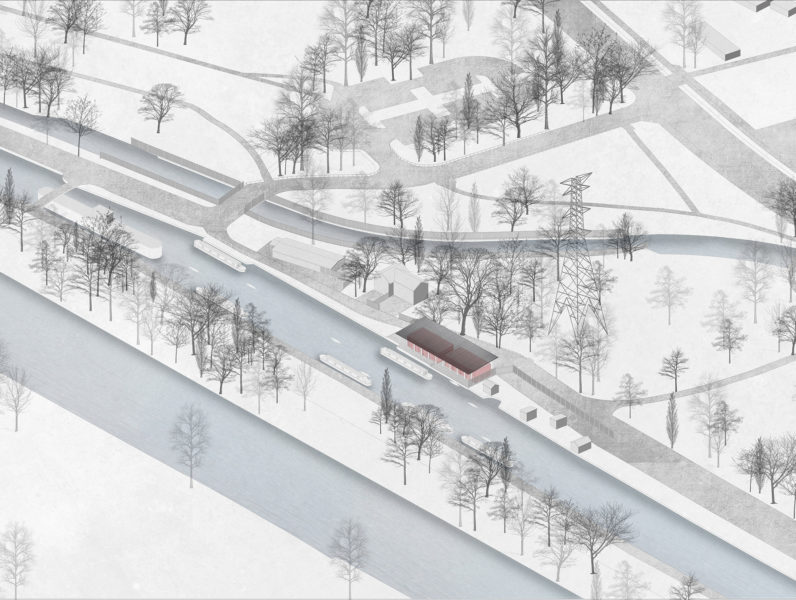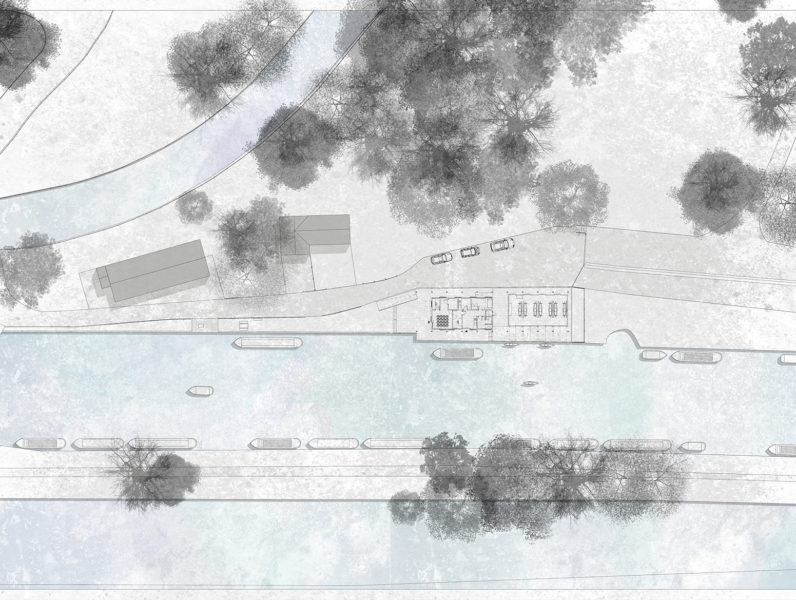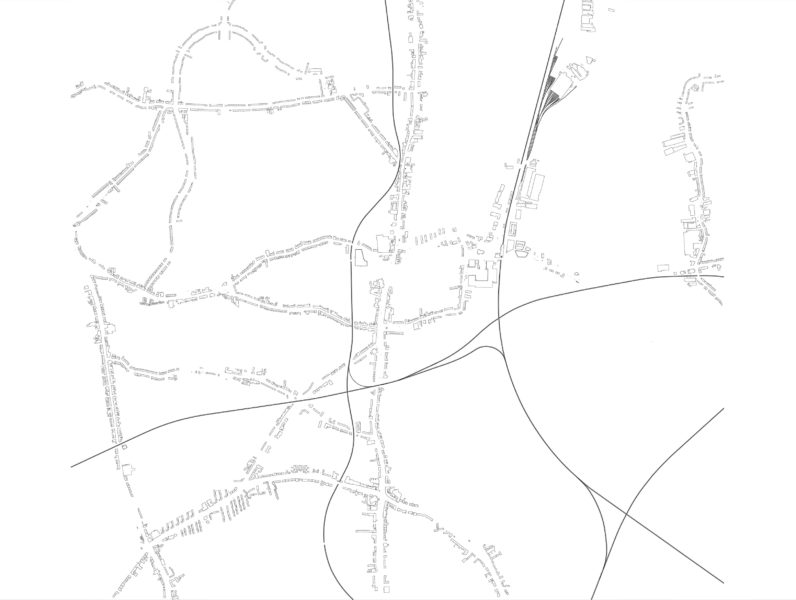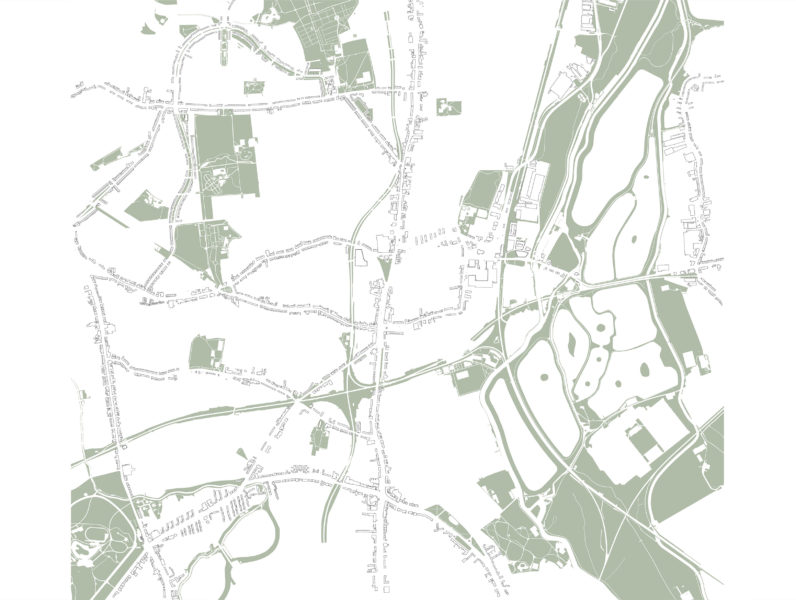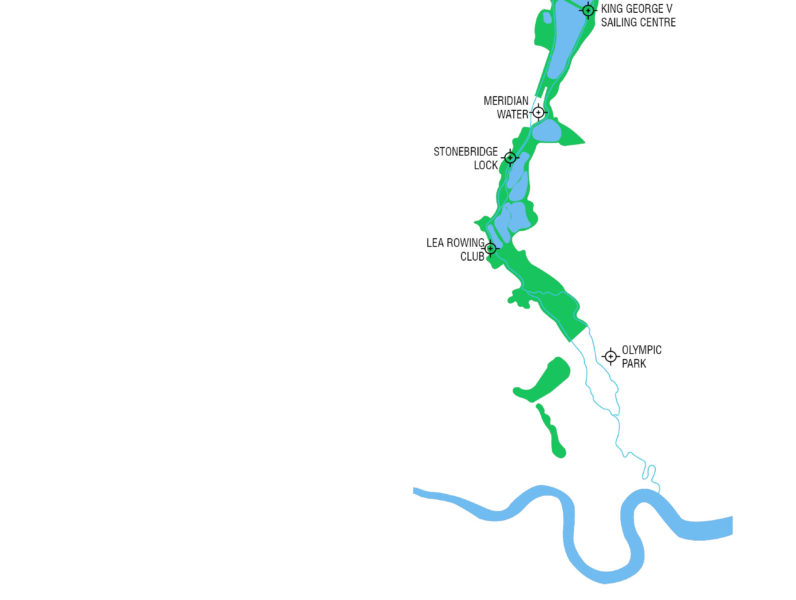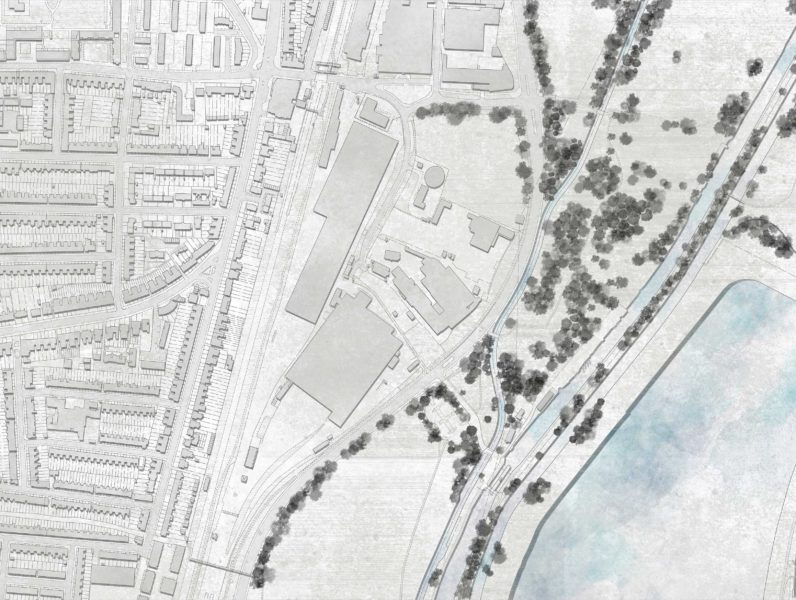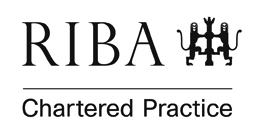Tottenham Urban Study
Location:
The project is located at Stonebridge Lock in the Lea Valley. The client asked GFA to design a new sports centre for boating on the Lea River and bike rental plus spaces for community activity including meetings and educational visits from schools. The client’s ambition is to build on the legacy of sport in the Lea Valley following the construction of the Regional Park in 1966 and the Olympic Park in 2012. This is a ‘bottom up’ regeneration project which we believe will enhance the physical surroundings and small community of Stonebridge Lock. For detail on the building design please visit the Stonebridge Lock project on the website.
Architect’s response to the brief:
As part of this project we undertook an analysis of the area looking at the project in relationship to Tottenham as a whole. The railway combined with the the motorway have made access from Tottenham to the Walthamstowe Wetlands difficult. Part of our brief was to look at these connections in relationship to the new centre as this affects the viability of the project.
The Lea River and The Brent ‘bookend’ London and they became the water based conduits for trade both inside and around London. They were left open to extend navigability and eventually gave rise to London’s industrial areas. These canals are a continuous ecological pathway based on human and horse movement and they have their own landscape of toe paths, locks, keepers cottages, stables for canal horses, inns and boats. It is in this man made landscape that we are working.
We commenced the design for this facility mapping the site and reviewing green spaces, hydrology and infrastructure. This process of mapping is about revealing something that is there but has remained unseen, the process is making an x ray of all the different layers of the landscape and then combining these layers to see what could become a landscape structure. These layers consist of the infrastructure of canals, roads and rail and overhead powerlines; the green spaces and the rivers and reservoirs.
Through this process we are able to understand the identity of the place. The Lea Valley has the advantage of being a natural geographic feature, with its own history, so that one only has to stir the collective memory to discover its creative possibilities.
As part of our research we also reviewed schemes at Hale Wharf and the Meridian Water Masterplan (2013). Meridian Water will hopefully explore opportunities to use the River Lee Navigation as a freight and leisure corridor; to support larger employment uses in making better use of the waterway networks for freight opportunities; and to provide boating and water sports activities to create a leisure destination, and provide a community focus. Hale Wharf will deliver a large number of new residents who would benefit from further leisure activities in the area.
Meridian Water and Hale Wharf cannot be seen in isolation and their strategic location within the Lee Valley Regional Park and London-Stansted-Cambridge Corridor is an opportunity to look at leisure and sports provision in the Lee Valley as a whole. We would hope these developments would support investment in leisure facilities adjacent to Meridian Water in Haringey and Ponders End and Stonebridge Lock enabling the creation of a chain of viable, interrelated leisure facilities with strong footfall. This corridor wide approach is supported in local and regional planning documents.
Architectural services provided:
Building design
Urban design
Stakeholder consultation with the Lee Valley Regional Park Authority, the Canal and River Boat Trust, the local authority, Haringey and the local community including the ‘Friends of Tottenham Marshes’
Architect: Graham Ford Architects
Graham Ford Architects
Address Britannia House, 11 Glenthorne Road, Hammersmith, London W6 0LH
Phone +44 (0) 2087482024
Email info@grahamfordarchitects.com
GFA is a West London (Hammersmith) based architectural practice. We work for schools, sport clubs, commercial clients, business owners, developers, private clients and contractors. We are experts in gaining planning permission in Royal and Regional parks and in Conservation Areas through innovative design that delivers cost effective and inspirational leisure facilities.

